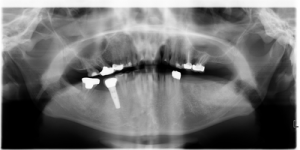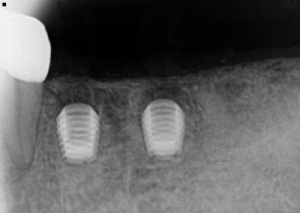Dental implants have transformed the modern practice of dentistry, but all implants are not created equal.
There are two main materials used in modern dental implants: Titanium and Zirconia. Titanium has been used for a long time with good results and it is widely available. The downside to using titanium is that, while it is considered to be more biocompatible than stainless steel, it is a metal.
As an alternative implant material, Zirconia is considered to be more biocompatible. Zirconia implants are fairly new compared to Titanium and not as widely available. Zirconia implants are also larger than Titanium implants, making them more invasive. They also frequently need to be reshaped with a bur to allow them to fit, a process that often leads to microfractures. As soon as Zirconia implants become smaller and easier to place, I will be first in line to offer them.
Dental implants also vary widely in size. At one time, it was believed that larger implants were more durable and would last longer. More recent research has shown that isn’t always true.
Finally, dental implants vary by how the crown connects to the implant. They can be cemented, screwed, or cold welded. With the cold welds, the implants are designed so the teeth click into place.
In my practice, when a patient and I decide that an implant is the best option, I recommend a small and well designed titanium implant coated with biocompatible ceramic. First the implant is placed. Once the implant has properly integrated into the bone and we are sure the bone has accepted the implant, the abutment, or connecting piece, and the crown are put into place. In my practice, implants integrate well at least 95% of the time.
While the implants I use are significantly smaller than traditional implants, they have a longer life expectancy than larger implants. Their smaller size also reduces the chances that sinus lifts, bone grafts or other surgical interventions will be required before the implant can be placed. Also, smaller implants are less invasive and cause less pain after the surgery.


Although implants are becoming easier and have a higher success rate than they used to, they still aren’t a good option for every patient. The most important determining factors are general health and the health and thickness of available bone. For patients who are not considered to be good candidates for implant surgery, other restoration options will be offered, such as a fixed bridge or removable partial denture.





